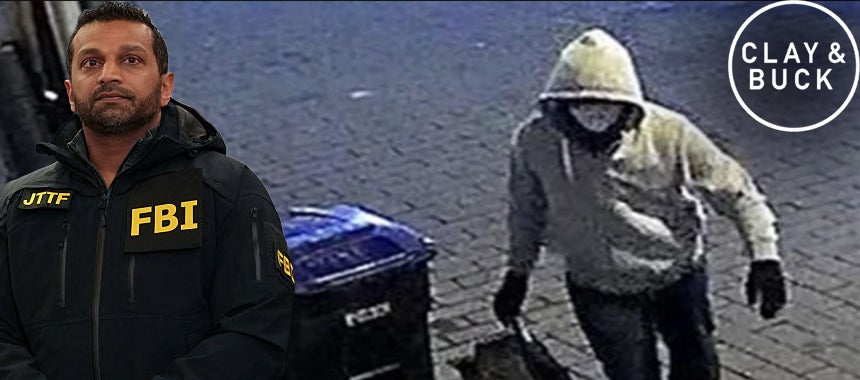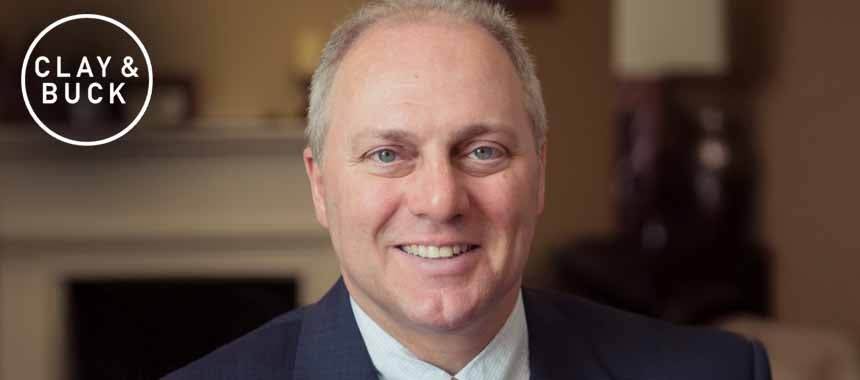A Majority of Baltimore Murders Are Committed by Criminals Let Free
26 Jul 2022
CLAY: I read this piece in the Wall Street Journal. Buck, I thought this was so well done. The author of this opinion piece is Sean Kennedy, and it’s using one particular city to try to examine why our violent crime, murders in particular, rate has skyrocketed, and the city that Sean Kennedy here analyzes is Baltimore.
BUCK: Have you spent much time there? I’ve spent a lot of time, I’ve spent a lot of time in Baltimore, yes, because I was doing work as a contractor with a financial advisory there over years. I actually hosted a podcast that was based, you know, for early on, was based out of Baltimore. So I spent a lot of time in Baltimore. There are a couple of very, very beautiful, little parts of Baltimore. They do exist.
CLAY: Yes.
BUCK: Overall, it is a shockingly underdeveloped and dangerous city.
 CLAY: So, I have been to a lot of Baltimore Oriole games back in the day. Camden Yards is one of the first kind of throwback stadiums. I went to college in D.C. and D.C. at the time did not have a team. You could take the train up to the Orioles games in Camden Yards really cool, and I’ve been to Army-Navy a couple of times in the Baltimore area, in the Baltimore Ravens stadium. But Baltimore, not a safe city, and probably for people who don’t live on the East Coast, if you had to rank cities on the East Coast, Baltimore last. Philadelphia, I think has passed Baltimore. Like, if you were ranking cities that you were gonna live in in the Bos-NY corridor — you know, Boston all the way down —
CLAY: So, I have been to a lot of Baltimore Oriole games back in the day. Camden Yards is one of the first kind of throwback stadiums. I went to college in D.C. and D.C. at the time did not have a team. You could take the train up to the Orioles games in Camden Yards really cool, and I’ve been to Army-Navy a couple of times in the Baltimore area, in the Baltimore Ravens stadium. But Baltimore, not a safe city, and probably for people who don’t live on the East Coast, if you had to rank cities on the East Coast, Baltimore last. Philadelphia, I think has passed Baltimore. Like, if you were ranking cities that you were gonna live in in the Bos-NY corridor — you know, Boston all the way down —
BUCK: Look, there’s obviously good places every city, right, but if you’re talking just at a crime level, Philly had its worst ever year for murders last year. I forget the number, but I think you’ll want to say it was five or 600 which for a city of that size is a lot, might have even been closer to 700. Baltimore is not a big city by population, but on a per capita basis, it’s usually in the top five worst cities in the country for murders, maybe top 10, depends the year. St. Louis, according to the crime —
CLAY: Is number one.
BUCK: — data specialist was number one for this most recent year, which I didn’t realize St. Louis was per capita the highest murder rate in the country.
CLAY: Here’s my Bos-NY, D.C. power ranks. Having spent some time in all these places. If I had to live, I’d go D.C. one; I’d go Boston two, although I hate winters. I think Boston is pretty nice. I’d go New York City three. I’d go Philly four and I would go Baltimore five. That’s like the Amtrak corridor from Boston all the way down. So that would be my power ranking in order, one to five. I’d put Baltimore last.
“Charm City has recorded,” I’m reading from this analysis of murders, “more than 2,500 homicides since 2015,” and according to this study — I’m reading directly from the article — “Many of these killings could have been prevented, my analysis of court records and police data suggests, if the justice system had worked as intended.”
And he gives a couple of specific examples here about guys who are committing murders that are should have been still behind bars. “Baltimore’s murders,” I’m reading from this, “are typically committed by criminals with lengthy rap sheets, who often serve minimal time or are released early. These repeat offenders should be locked up but aren’t…”
He looked at “110 suspects charged with homicide in Baltimore between January 2019 and July 2020. [His] analysis indicates that the majority of the city’s murders didn’t have to happen. Ninety of the defendants,” 90 of the 110, “had previously been convicted of an offense carrying a sentence of three or more years in prison.” Buck —
BUCK: And they didn’t serve it.
CLAY: And didn’t serve it. So 90 of the 110 he looked at, theoretically, those murders didn’t have to happen if people had been serving their time behind bars.
BUCK: This is the part that everybody all over the country needs to know — and I think everyone intuitively —
CLAY: Yeah.
BUCK: — and certainly our audience knows this. But if you were to do a deep dive in Houston, in Phoenix, in Baltimore — as we just discussed — in D.C., find me a city that has had a substantial rise in murders. New York, clearly. Milwaukee. Here.
CLAY: Milwaukee we know.
BUCK: Milwaukee. Find me a city with a substantial increase in murders in the last few years. You do an analysis of what has been going on, the progressive prosecutors — Marilyn Mosby is one of them — progressive prosecutors who promised toned mass incarceration have been systematically thwarting the will of the people as expressed through their state legislatures when it comes to what kind of punishment people should get for doing the bad things?
CLAY: Yes.
BUCK: The logic — or the lack of logic, in a sense, but the argument — of the “end mass incarceration” people is, “We just need to have fewer people in prison.” What that has meant is that people who should be serving real prison terms end up getting almost no prison, and the way they get around the state mandatory minimums for things like armed robbery or attempted murder is these prosecutors give them plea deals that don’t even list the real charges they should be.
 It’s not even, “Okay, you’re going away for attempted murder. We’ll give you five years. You could get 15.” That’s what people think of as plea deal. What they’re doing — Mosby, Bragg here in New York, Gascon in Los Angeles — is, “Oh, you’re a gang member who tried to kill somebody over a turf war or something? We’re not even gonna charge you for attempted murder. We’ll charge you for drug possession and illegal weapons possession and give you six months instead of the five or 10 years that you should get,” which is exactly what Baltimore analysis you’re talking about shows.
It’s not even, “Okay, you’re going away for attempted murder. We’ll give you five years. You could get 15.” That’s what people think of as plea deal. What they’re doing — Mosby, Bragg here in New York, Gascon in Los Angeles — is, “Oh, you’re a gang member who tried to kill somebody over a turf war or something? We’re not even gonna charge you for attempted murder. We’ll charge you for drug possession and illegal weapons possession and give you six months instead of the five or 10 years that you should get,” which is exactly what Baltimore analysis you’re talking about shows.
CLAY: And it’s such a great deep dive. I would encourage you guys to go read this article. We’re kind of giving you the details. But what it brings home, Buck, is, there are two things we can one billion percent do that should and would immediately start to reverse the violent crime epidemic that is sweeping through our entire nation, and this is getting scary. Get more cops back out on the streets.
Because not only are we losing cops for retirement and losing cops who are deciding, “We’re not getting supported by all of the apparatus of the city surrounding here — and therefore, we’re having issues actually hiring anybody competent who wants to be a police officer right now. We’re losing the veterans, and this is gonna make things worse.” We gotta get more cops and we gotta support them and let ’em do their jobs. And this goes to the direct point on the Baltimore study. Violent criminals we gotta put them in prison and we have to throw away the keep. We gotta it, put ’em out forever.
BUCK: You gotta lock up criminals, folks.
CLAY: Yes.
BUCK: You gotta have people who understand that if they’re going to prey on the innocent, if they’re gonna hold guns to people’s faces and say, “Give me all the money out of the register or I’m going to murder you right here,” you don’t get another chance than that in terms of, “Oh, well, we’re just gonna maybe give you six months and then you’ll be out again.” It’s, “You serve 10 years. Your second chance comes after you served your 10 years.”
CLAY: Yeah.
BUCK: They have abandoned this logic. They have progressive prosecutors and Democrat Party because they’re so terrified — terrified — of not seeming to do enough on what they claim is the racial injustice of the criminal justice system. They have decided that we’re just not gonna lock up criminals. Irrespective of what that does to society, we’re just gonna let criminals…? It’s such a small — and this is the other thing about the Baltimore analysis, Clay. It’s such a small group of people that are doing this.
CLAY: Yep.
BUCK: So effectively what the Democrat mind-set has become is, if there are… Let’s say in a city where here there’s a minority population that’s 30 or 40%. In Baltimore, it’s more like 50 or 60% of the city, might even be higher than that, might be 60 or 70, but 1% of the people within that minority population are committing all of the violent crimes.
CLAY: Yes.
BUCK: You can either protect the 99% who want to live their lives, go do their jobs or whatever, or you can say, “If there’s a disparate impact on that 1% within the minority community, that seems racist to us so we won’t actually enforce the laws,” and that’s what they’ve done, and people are suffering.
CLAY: And the minority communities are overwhelmingly saying, “Give us more police,” and —
BUCK: All of them! Across the country!
CLAY: — they are now arguing, I think increasingly, “Put violent perpetrators behind bars and keep them there so my kids and my family is safe.”
Recent Stories

J6 Pipe Bomb Suspect Nabbed After 5 Years
Huge news, which casts yet more doubt on the honesty of the Biden administration.

America’s Travel Revolution Is Coming -- Duffy Reveals What’s Next
Transportation Secretary Sean Duffy shares a peek into the not-so-distant future of U.S. travel.

Steve Scalise on the J6 Pipe Bomber Arrest, the GOP Affordability Push and the SCORE Act
Rep. Steve Scalise of Louisiana joins C&B.

Jim Jordan: Big Beautiful Bill Benefits Coming by 2026
The Ohio congressman checks in with Clay and Buck.






